Family : Lutjanidae

Text © Giuseppe Mazza

English translation by Mario Beltramini
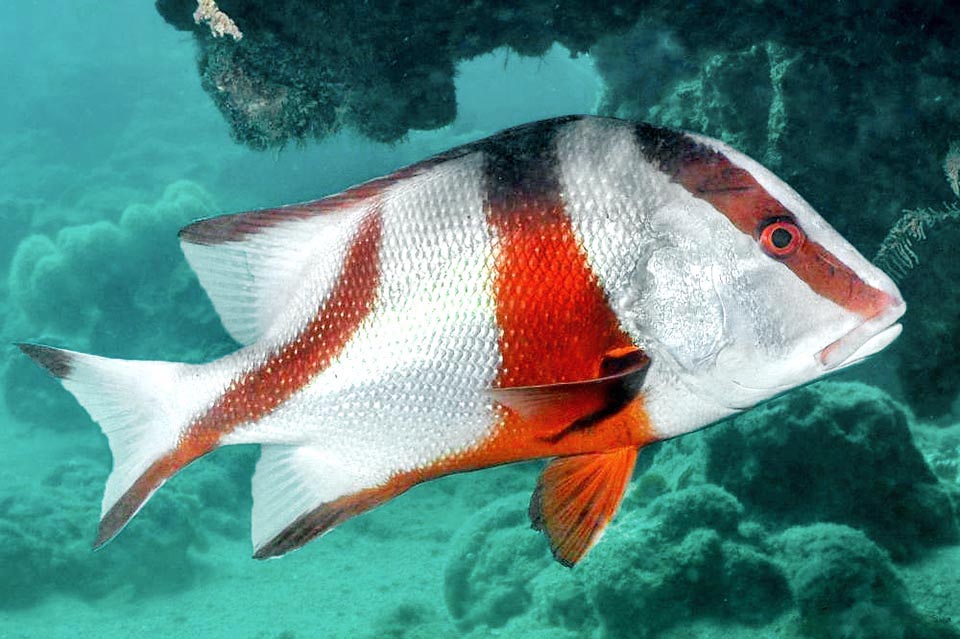
Usually 60 cm long, but even more than 1 m, Lutjanus sebae is a fish of the tropical Indo-Pacific present from the African coasts to Japan and New Caledonia © Rick Stuart-Smith, Reef Life Survey
Lutjanus sebae (Cuvier, 1816) belongs to the class of the Actinopterygii, the ray-finned fishes, and to the great order of the Perciformes, rich in over 7000 species.
Mostly known as Emperor red snapper, it is not actually a red snapper. The true ones in fact are inserted in the Sparidae, whilst this belongs to the family of the Lutjanidae, that of the “Snappers”, the so-called snapping fishes, that count 17 genera and 113 species, present in the tropical and subtropical seas of the whole world.
The genus Lutjanus, created by Bloch in 1790 for Lutjanus lutjanus, boasts presently about 70 species and originates from the name the Indonesian fishermen gave to this fish.
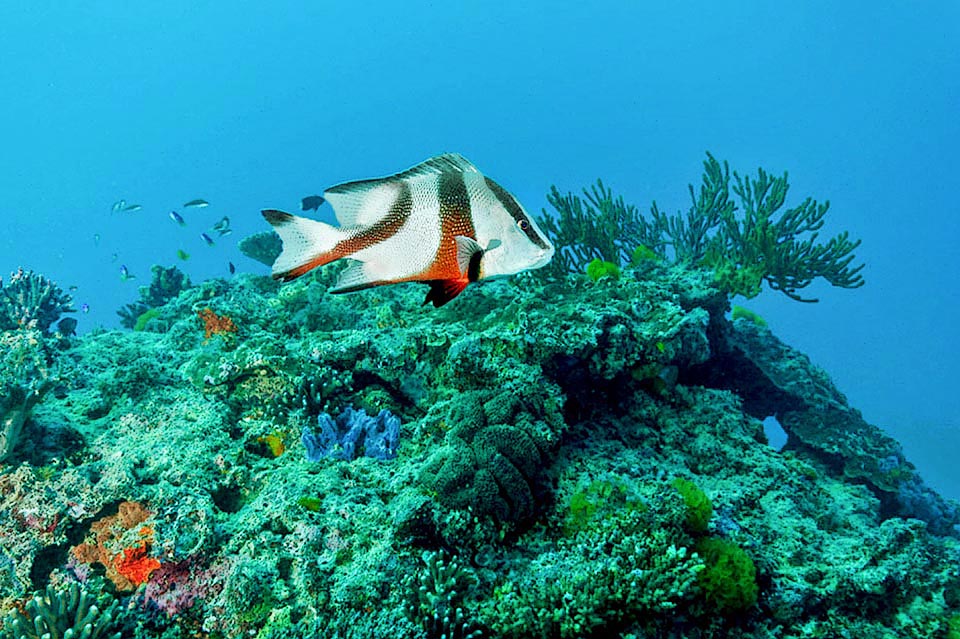
Lives mainly associated to coral or rocky reefs, between 5 and 180 m of depth, moving alone or in schools of peers © Wolfram Sander
Conversely, the specific term sebae, of Seba in Latin, honours the memory of Albertus Seba (1665-1736), Dutch pharmacist and zoologist who illustrated with drawings the marine life of Indo-Pacific, and, among other things, this species.
Zoogeography
Lutjanus sebae is present in the Indian Ocean and in the western Pacific. Starting from the Red Sea and the African coasts it reaches Australia and New Caledonia, that with Vanuatu marks the eastern and southern limit of the species, and northwards touches the southern coasts of Japan.
Ecology-Habitat
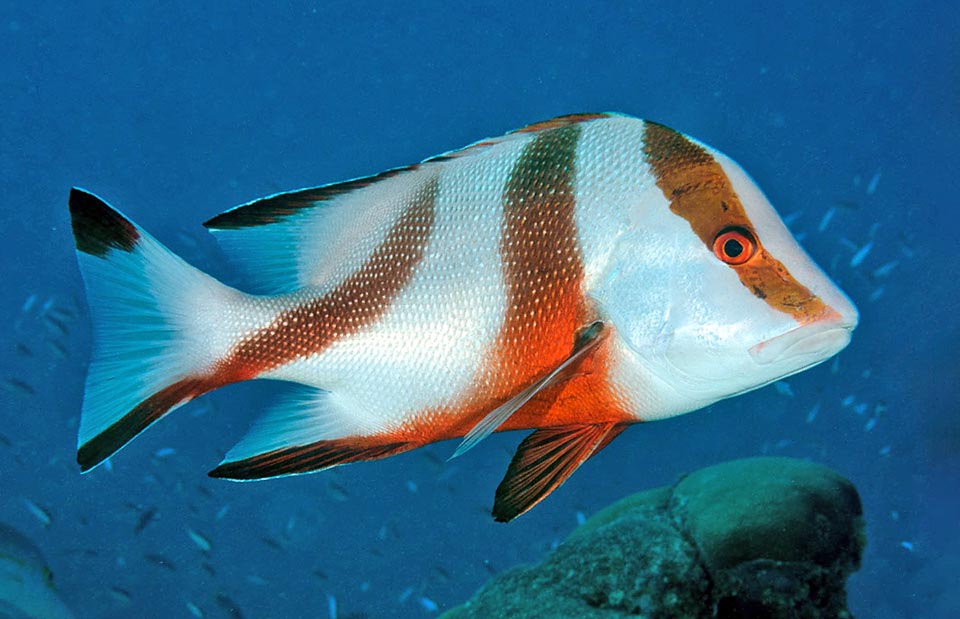
It eats fishes, cephalopods and crustaceans and may reach the age of 40 years exceeding the weight of 30 kg © Wolfram Sander
Lutjanus sebae is a fish associated with the coral or rocky reefs, where it is found between 5 and 180 m in depth.
The juveniles often grow among the mangroves’ roots.
When they live among the corals, in shallow and clear waters and see a predator approaching, they almost take refuge among the spines of Astropyga radiata, a fearful red sea urchin that exceeds the 20 cm of diameter, with hollow spines, about 5 cm long, linked at the bottom with venom glands.
Morphophysiology
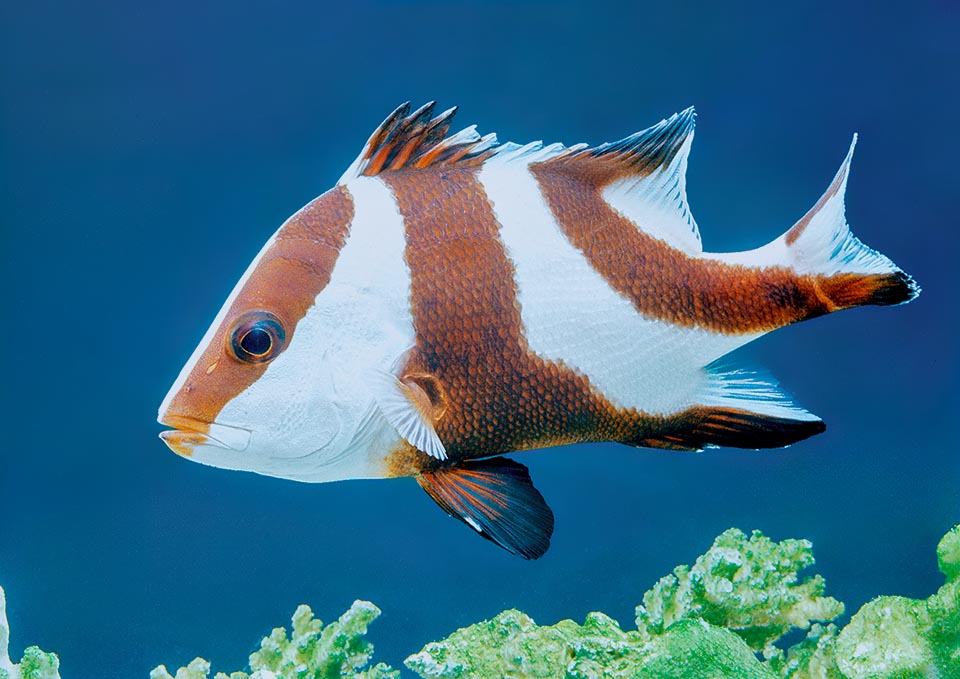
Can live in adequately sized aquaria but is usually fished for flesh and farms have been created in Pakistan, Singapore, Malaysia, Thailand and Philippines © Giuseppe Mazza
Though the current size is of about 60 cm, Lutjanus sebae may reach the length of 116 cm with a published maximum weight of 32,7 kg.
The body, about half the height of its length, is compressed on the sides with the profile of the head going down straight to the snout or lightly convex in the first part. The preoperculum displays on the profile a moderate notch incision. The teeth, thick and sharp, arranged in crescent shape, are present only on the vomer.
The dorsal fin has 11 spiny rays and 15-16 soft; the anal 3 spiny rays and 10 unarmed; the pectoral ones 17 soft rays and the pelvic 1 spine and 5 unarmed rays.
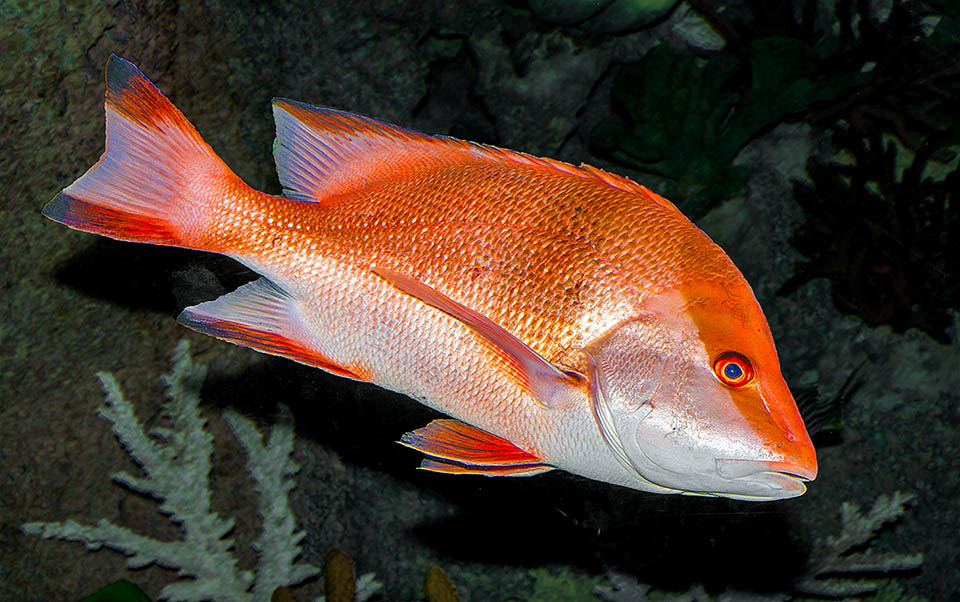
The adults, with faded mimetic bands, are practically red with white belly. In reproductive gatherings the males fecundate together thousands of eggs entrusted to currents © Giuseppe Mazza
The elegant livery of the subadults and of the juveniles, often present in the aquaria, has 3 more or less dark red bands on white background. The first crosses the eye parallel to the profile of the head; the second goes from the spiny part of the dorsal fin up to the pelvic fins and finally reaches the low edge of the anal; the third decorates the upper part of the dorsal soft rays and goes down transversally up to the inferior lobe of the caudal fin.
In the adults remains only a weak trace of these mimetic traits and the body is almost uniformly red with the clear belly.
Ethology-Reproductive Biology
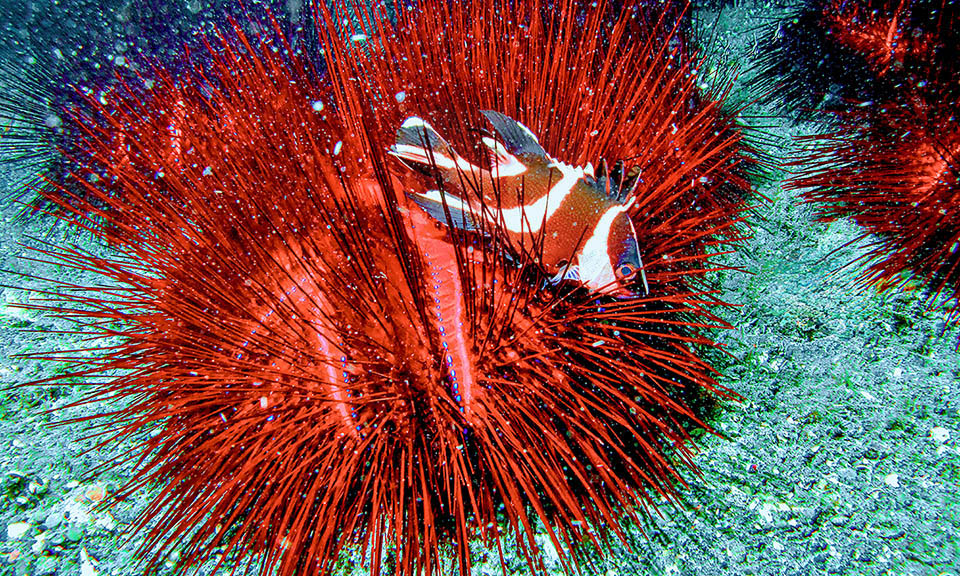
When they don’t grow sheltered by mangroves, the juveniles often refuge among the spines of Astropyga radiata, sea urchin more than 20 cm broad © Bernard Dupont
Lutjanus sebae feeds only on fishes, cephalopods and crustaceans, hunting alone or in schools formed mainly by individuals having the same age.
It can live even 40 years, but the growth is slow and reaches the sexual maturity only when about 8-10 years old, starting from the length of 43 cm for the females and 46 cm for the males, who then grow faster than their partners, turning out to be decidedly bigger.
For the reproduction, that occurs in groups between October and April depending on the sites, get form aggregations and the eggs fecundated by more males are entrusted to the currents. The resilience of the species is mediocre with a possible doubling of the populations in 1,4-4,4 years, and the fishing vulnerability, high, already marks 59 on a scale of 100.
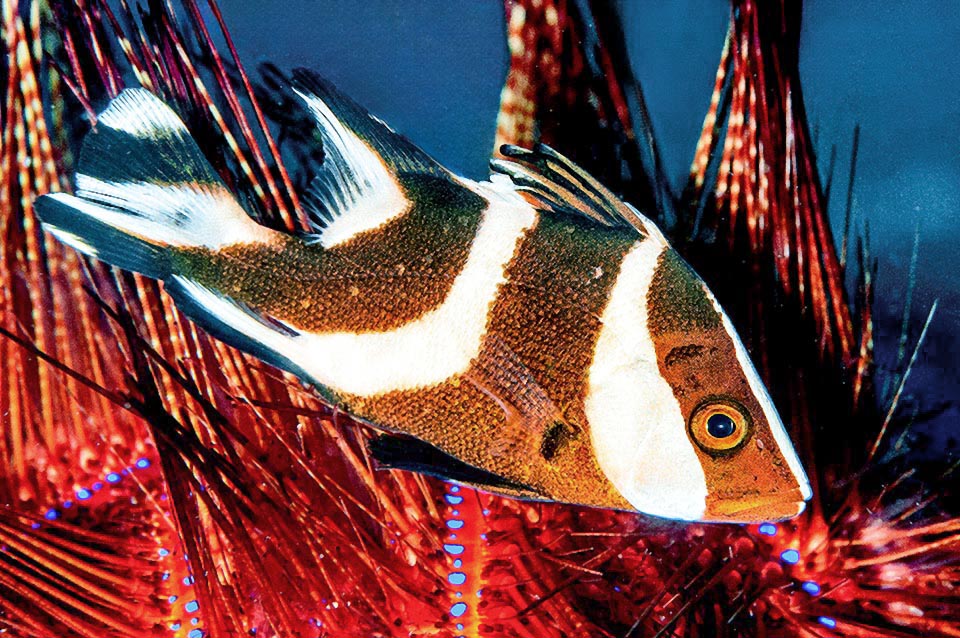
The spines, even 5 cm long and hollow like syringes, have at the base venom glands and therefore nobody dares to attack them © Karen Honeycutt
In fact, the flesh of Lutjanus sebae is considered valuable, and farms were created in Pakistan, Singapore, Malaysia, Thailand and Philippines, also to avoid the possible risk of ciguatera, serious food poisoning, that happens when these fishes have been preying for years organisms that accumulate in their tissues the toxin produced by the dinoflagellate Gambierdiscus toxicus.
Considered also the vast diffusion, Lutjanus sebae appears however since 2015 as “LC, Least Concern”, that is at “Least Worry” in the IUCN Red List of the endangered species.
Synonyms
Diacope sebae Cuvier, 1816; Diacope siamensis Valenciennes, 1830; Diacope civis Valenciennes, 1831; Genyoroge regia De Vis, 1884.
→ For general information about FISH please click here.
→ For general information about BONY FISH please click here
→ For general information about CARTILAGINOUS FISH please click here.
→ To appreciate the BIODIVERSITY of BONY FISH please click here.
→ To appreciate the BIODIVERSITY of CARTILAGINOUS FISH please click here.
